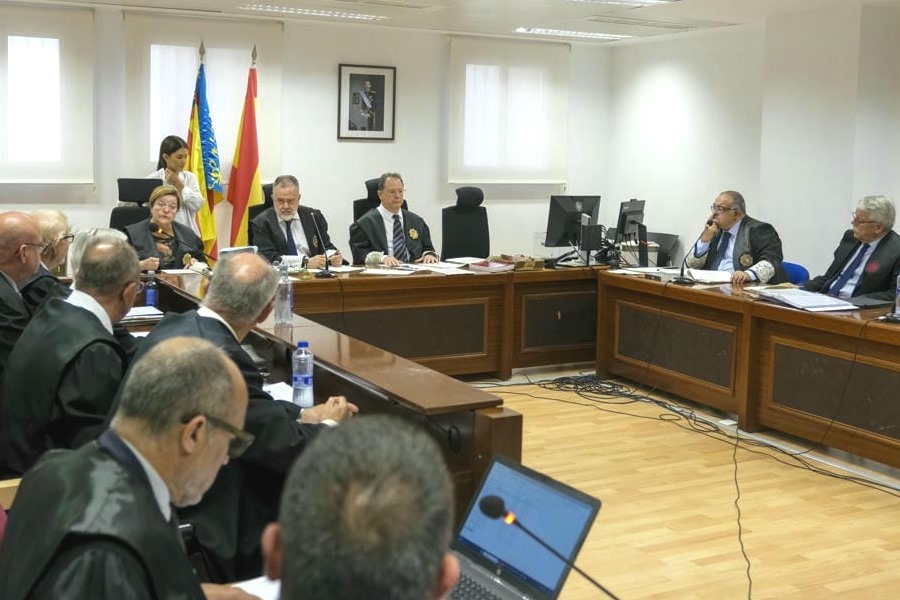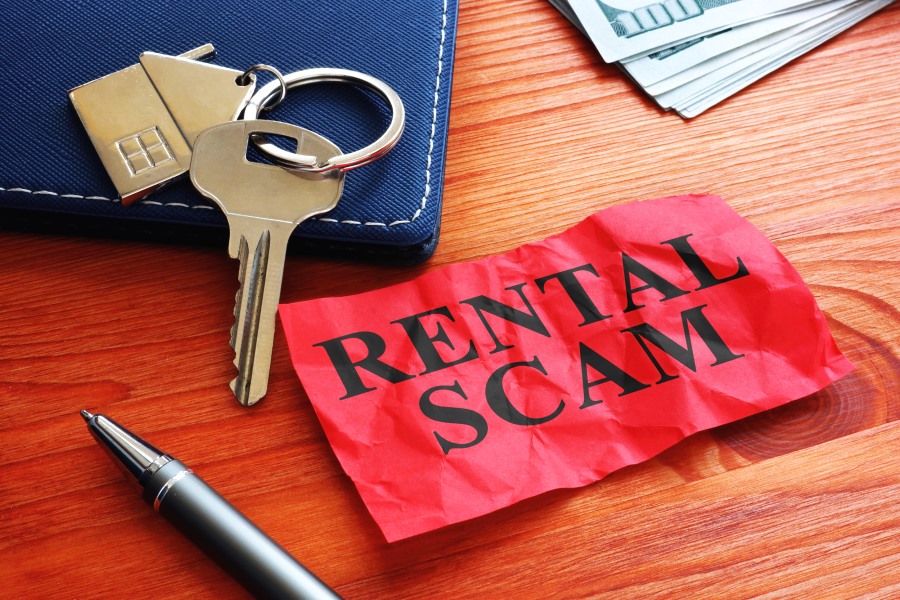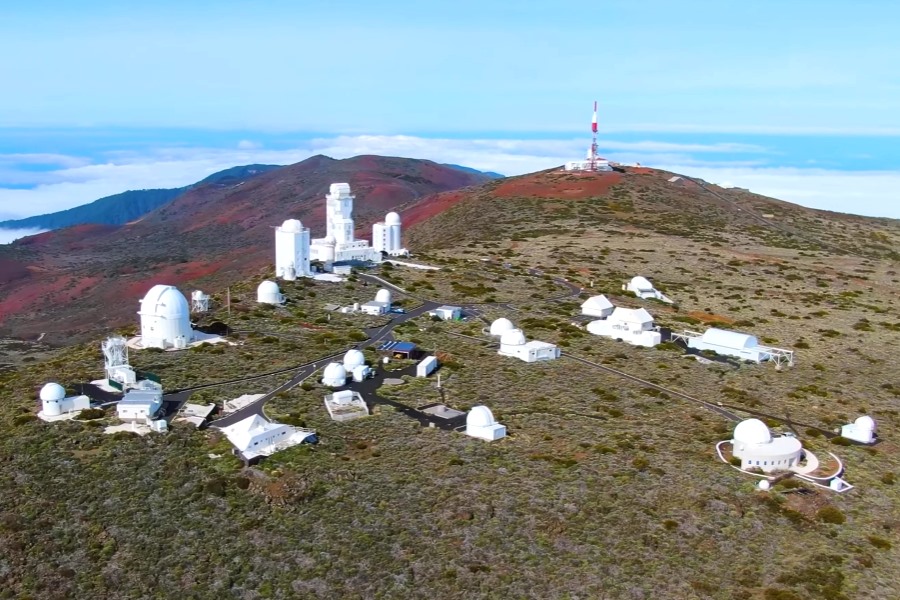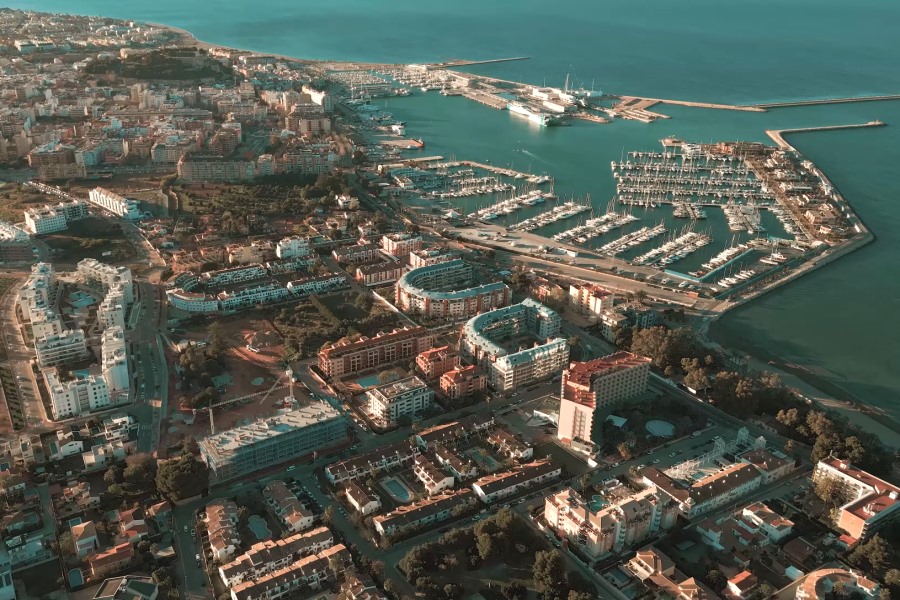
Denia House Price Trends and Year-by-Year Evolution (2015–2025)
2015–2016: Dénia began recovering from the previous decade’s downturn, with prices around €1,600–€1,700/m². Activity was modest, driven by domestic and returning foreign buyers seeking value. By late 2016, prices edged up to €1,800/m². The market remained buyer-friendly, with abundant inventory and gradual growth.
2017–2019: A more confident phase began. Low interest rates and steady Northern European demand pushed prices to €1,900/m² by 2017, with annual growth around 5–7%. By 2019, well-kept coastal properties reached €2,000–€2,400/m². Demand focused on move-in-ready homes, and volumes reached record highs.
2020: COVID-19 caused a temporary slowdown. Spring transactions stalled and prices dipped (–3%). Recovery began by summer, as outdoor space and seaside living became priorities. Year-end values rebounded to pre-pandemic levels (€2,100/m²).
2021: Growth resumed steadily. Inbound relocation and remote work demand lifted prices to €2,200–€2,300/m² by year-end. Supply remained tight, and low mortgage rates fuelled purchases.
2022: A breakout year. Inflation fears and strong savings drove investors to real estate. Prices surpassed €2,500/m² mid-year, up 15–20% over 2021. Central and coastal zones led the surge, with record transaction volumes.
2023: Prices rose to around €2,600/m² in spring, dipped slightly mid-year, then recovered by autumn. Average prices ended up 10–12% higher than 2022. Market momentum continued, though with more price sensitivity.
2024–2025: Prices climbed sharply again. By April 2025, the average reached €3,300/m², up 18% year-on-year. Demand remained strong across the board, with high-end coastal properties nearing €3,900/m². Even inland areas like La Xara and El Verger hit new peaks, with general averages settling between €3,100–€3,300/m².
Denia Buyer Demographics, Preferences and Motivations
Dénia’s buyers have grown steadily more diverse. British nationals historically dominated foreign purchases, but Brexit and global shifts have reduced their share. By 2024 British buyers still led but accounted for a smaller fraction than before. Northern Europeans (German, Dutch, Belgian, and Scandinavian buyers) remain very active, drawn by the stable climate and value relative to their home markets. In recent years, Eastern European (especially Polish and Czech) buyers have increased, often seeking holiday homes or investment properties. Wealthy individuals from the U.S., Canada and Middle East have begun to appear in the high-end segment, taking advantage of Spain’s lifestyle appeal and relatively high-end inventory. Spanish purchasers (both local and from cities like Madrid/Valencia) remain important, particularly for mid-market housing.
Lifestyle preferences have also shifted, We see more younger families and remote workers competing with traditional retirees. After the pandemic, demand spiked for homes with offices, private gardens or terraces, and amenities like pools or communal fitness centres. Energy efficiency has become a “must-have” for many EU buyers: properties with solar panels, high energy ratings and green building certifications command premiums. Smart-home features and reliable fibre broadband are expected in new builds and high-end resales. Buyers increasingly prioritize quality-of-life factors like proximity to beaches, hiking (Montgó), marinas or golf (La Sella) over sheer size or bargain price. Safety, healthcare (Dénia’s hospitals are well-regarded) and good schools also sway decisions, attracting both retirees and mobile workers.
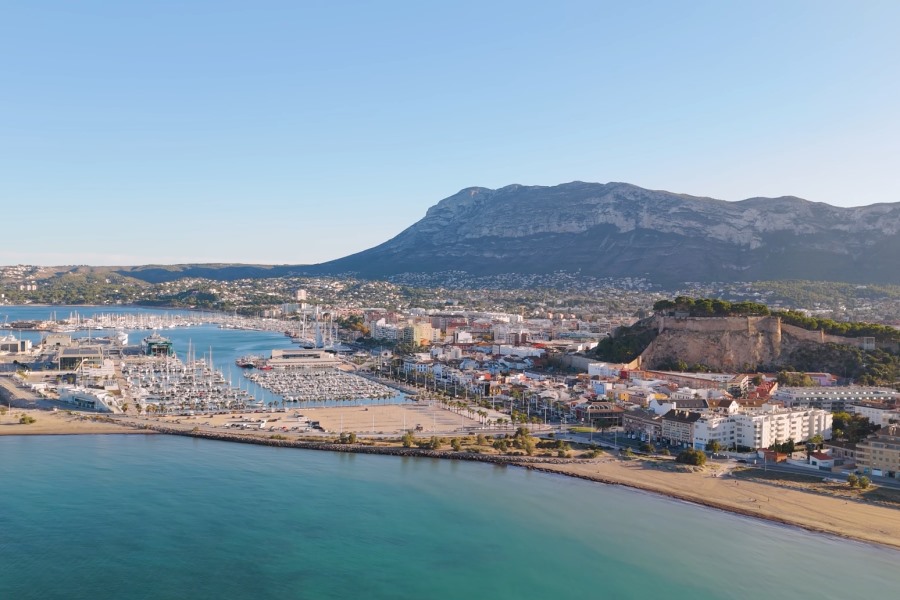
New-Build versus Resale Activity
Resales have predominated in Dénia for most of the decade, but new construction has become more visible recently. After 2015, very few projects were launched until demand recovered; most purchases were older second-hand homes. Since about 2018–2020, small-scale developments of apartments and villas have come online. According to industry reports, Denia is now one of the most active areas for new-builds on the Northern Costa Blanca. New projects (often led by Spanish developers) tend to be high-quality, featuring 2–3 bedroom apartments with communal pools and landscaped gardens.
Despite this, resales still outnumber new units by a large margin, and estimates suggest only 10–20% of yearly transactions are for new builds. The scarcity of land and strict zoning (especially near the coast) limits large developments. Many buyers still prefer renovated older homes in established areas. However, new-build sales have grown since 2020 as they offer modern design and warranties that appeal to foreign buyers.
Looking ahead, new construction is likely to remain a fraction of total supply, but it will be concentrated in marketable niches (e.g. energy-efficient apartments, and gated communities).

Denia Rental Market Evolution (Long-Term vs Short-Term)
In the mid-2010s, a large share of homes (estimates around 30–50%) were furnished as short term holiday rentals. This short-term market boomed until 2019, supported by tourism growth and platforms like Airbnb. Gross rents on those properties often exceeded long-term rates by 50% or more, yielding 5 to 7% annually. However, Covid in 2020 caused a temporary collapse in tourism. Many owners converted holiday homes to long-term rentals or sold off their portfolios.
By 2021–2022, short-term demand bounced back as visitors returned, with summer occupancies around 70–80%. Shortly after, Denia’s city council implemented a one-year moratorium (from Aug 2024) on new tourist rental licences in the urban centre. This exempted outlying zones (Las Rotas, Montgó etc.), but nonetheless signalled a trend toward stricter controls.
Meanwhile, long-term rentals have steadily reduced in stock. National rent laws now favour longer contracts (minimum 5 years), encouraging owners to keep units on the rental market. Rental asking prices in Dénia have been rising about 5–8% per year recently, roughly in line with or slightly above inflation. As a result, gross rental yields on year-round leases hover around 3–5% for typical properties (e.g. an average 3-bedroom letting for €1,100–€1,300 per month on a €300k purchase). Yields on holiday lets were historically higher, but the landscape is changing. Real estate agencies in the area observe that many tourist rentals are converting to long-term due to licensing complications.
Professional investors still chase lucrative summer rentals (especially in high-demand zones), but regulatory hurdles are causing a growing share to move into the long-term rental sector. Average rental growth has been solid, but high capital prices mean yields remain moderate. Investors now emphasize both segments (holiday and residential) depending on location: beachfront and port areas favour tourism, while suburban districts see more conventional tenancies.
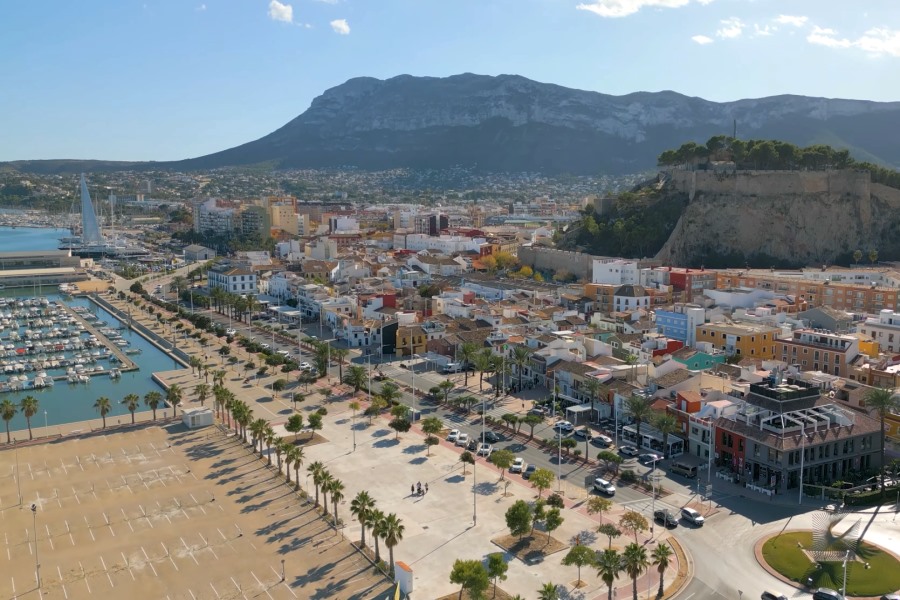
Infrastructure Developments and Impact
Infrastructure improvements have underpinned much of Dénia’s recent attractiveness. A key change was the abolition of AP-7 tolls across the Valencia region (Nov 2021), additionally, the CV-725 road between Dénia and Ondara has been upgraded (including new roundabouts and a dual carriageway segment completed around 2018), significantly improving access to the national motorway. These road enhancements have buoyed interest in inland towns (Ondara, La Xara, El Verger) as commuter bases for workers in Denia.
On the public transit side, Spain’s long-planned Mediterranean rail corridor is slowly progressing (Valencia–Alicante high-speed links), though a direct train to Dénia remains elusive. Denia’s port has seen additional investment with a new marina berth area. This increased appeal to boating-oriented residents and serves as a viable alternative to berths in Ibiza or Mallorca. Locally, urban improvements (such as expanded bike lanes, and renovated promenades) have enhanced livability and bicycle access.
Neighbourhoods near the CV-725 exits or by the hospital have seen above-average interest. Planned projects (an intermodal rail station and better bus links) could further stimulate prices if realized. In essence, better roads and amenities have made Dénia not just a holiday destination but a practical home for part-time commuters and locals, increasing overall demand.

Denia Neighbourhoods to Watch
Las Rotas / Montgó (Southeast Dénia). A coastal zone (with the Montgó Natural Park backdrop and rocky beaches) commands the highest prices in town. Luxury villas here often fetch €3,700–€4,000/m². Growth has been steady: sales reports show Les Rotes averaging around €4,000/m² in 2025. Limited new inventory (due to geography and regulations) means values remain high. We forecast modest further gains (perhaps 3–5% annually), as buyers continue to value its exclusivity and sea views.
Les Marines (Northwest Dénia) is a coastal area of urbanizations near sandy beaches. Current prices are roughly €3,800/m² for quality homes. This area has been popular with families and long-stay tourists. Large projects like new beach complexes could add supply. Near-term outlook is that strong demand should keep pushing prices upward by several percent per year, especially in newer sections closer to the shore.
The New Marina Area – between Avenida de Joan Fuster and Cami d’Aranda. Apartments and townhouses by the marina hit about €3,500/m² this year. This neighbourhood benefits from proximity to restaurants, the ferry to Ibiza, the upgraded port. And the new marina. It appeals to buyers wanting walkability and sea access. Recent years saw healthy growth (5–7% annually). We forecast excellent growth for the area, and a continued 5–7% per year, as revitalization of the port area proceeds.
La Sella – a golf community with large villas, modern flats, and a hotel. Prices here haven’t fared as well as coastal Denia or Javea (€2,800+ for villas, with premium on golf-front houses) but growth is limited by its exclusivity. Belgians, Scandinavians, Dutch and wealthy Spanish form most of the demand. Our outlook is small to good annual growth (3–4%), driven by ongoing appetite for resort living and limited land.
La Xara is a quiet inland village 3km from Denia. This area has seen rising interest from younger families and telecommuters seeking affordable alternatives. Currently, prices sit at €2,400/m². In the past few years, some modern developments (e.g. La Xara’s new estates) have pushed prices up 5–8% annually. As the CV-725 continues to improve access, its convenient central location should see house prices growing perhaps 6–8% per year through 2028, and even faster than Denia centre.
Ondara is an established town west of La Xara with convenient access to both the National Road and highway. It offers some new townhouses and apartment blocks. Prices are mid-range (around €2,000/m²). Demand is steady from middle-class Spanish and international buyers who commute to Denia. Growth has been modest (3–5% per year recently). With ongoing infrastructure benefits, Ondara is expected to see continued but moderate price rises, as a value-driven commuter base expands.

Denia Property Market Forecast (2025–2028)
Looking ahead, Dénia’s real estate market is expected to remain robust, driven by strong demand. Price gains will likely moderate but continue upward at roughly 4–6% annual increases into 2028, reflecting tight housing inventory and persistent lifestyle demand.
Key drivers will be sustained foreign interest and ongoing domestic demand for high-quality coastal living. Infrastructure improvements (progress on the Mediterranean rail corridor, further access road enhancements) and international connectivity (new flights to Alicante or Valencia) could add more strain to demand. Potential headwinds include rising borrowing costs that may slow some mortgage-based purchases and any broader economic slowdowns in source countries (Belgium, Netherlands).
Overall, a mild deceleration from the brisk 2022–25 pace seems likely. By late 2028, average prices in central Denia may reach around €3,500/m² (depending on type and location), with higher growth in prime pockets and more modest in outlying areas, with La Xara being the exception. The rental market should balance out, in the sense that long-term rents should see steady rises in line with inflation, while short-term yields reduce slightly and adjust to tighter regulations.
For investors and buyers, Dénia looks poised to offer moderate appreciation and stable long-term prospects, given its international appeal, infrastructure base, and restricted development pipeline. The coastal market’s resilience suggests that a risk of a strong correction is low; instead, one can expect continued gradual growth as part of Spain’s coastal real estate uptrend.
Are you looking to buy a home in Denia? What areas interest you the most?


